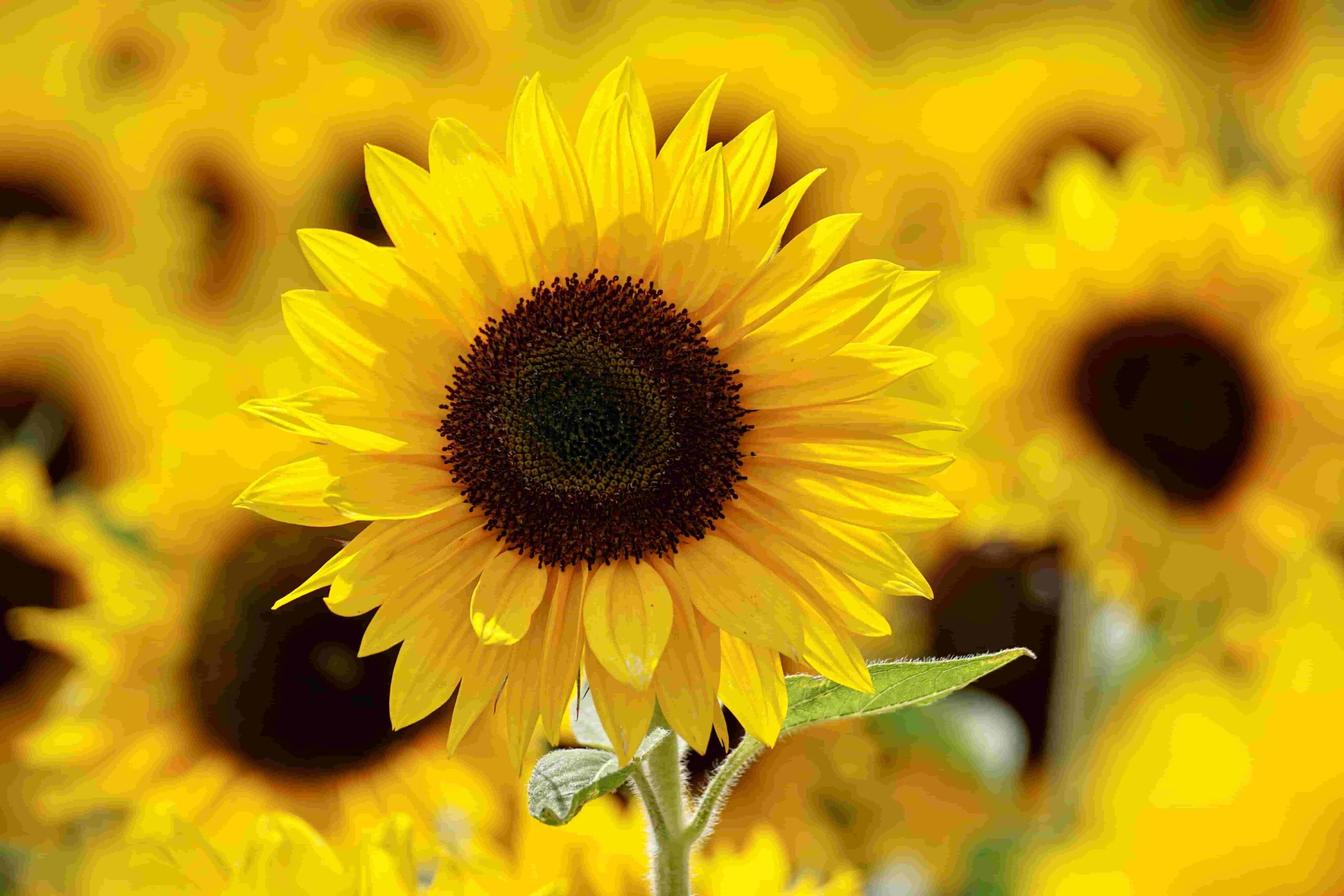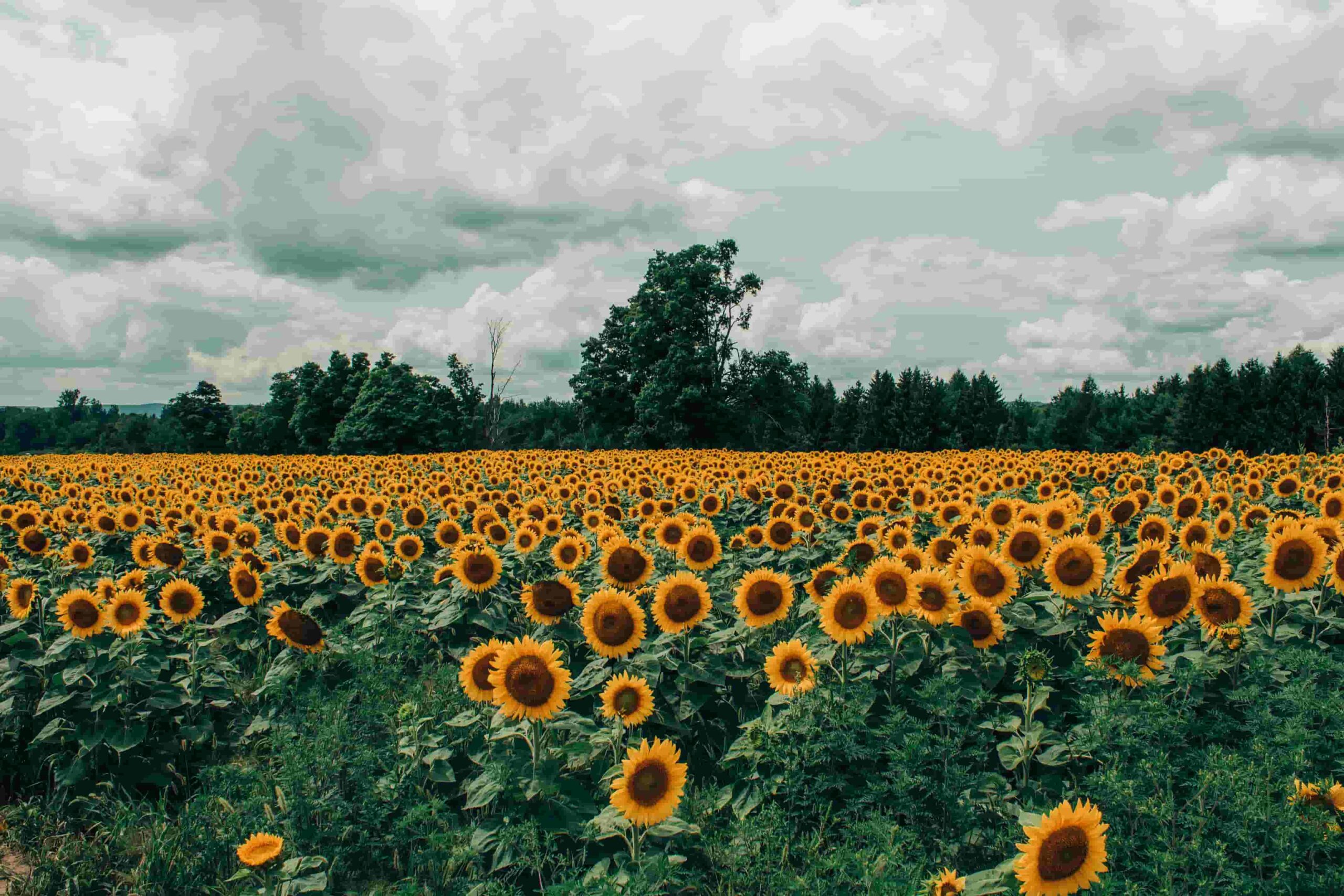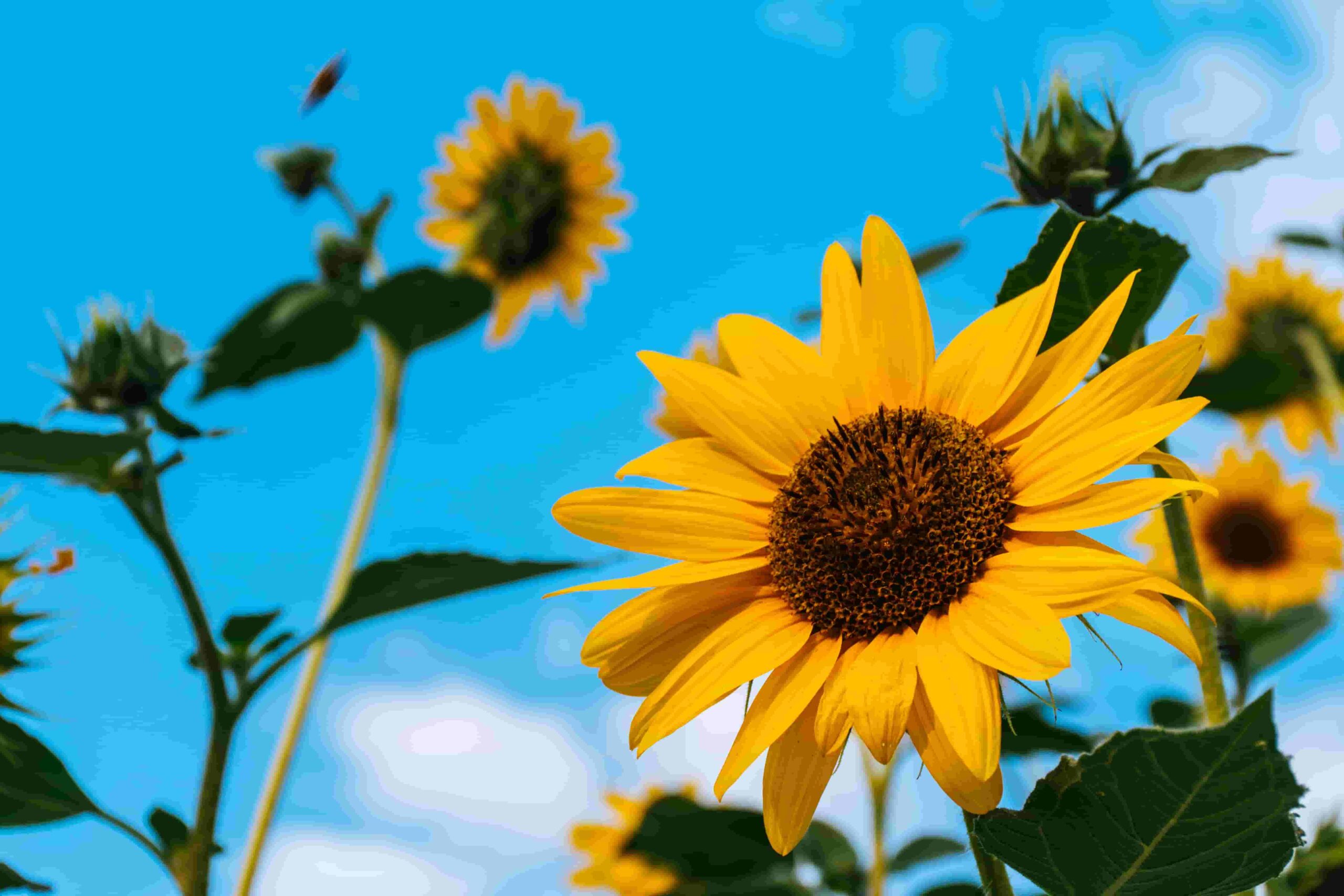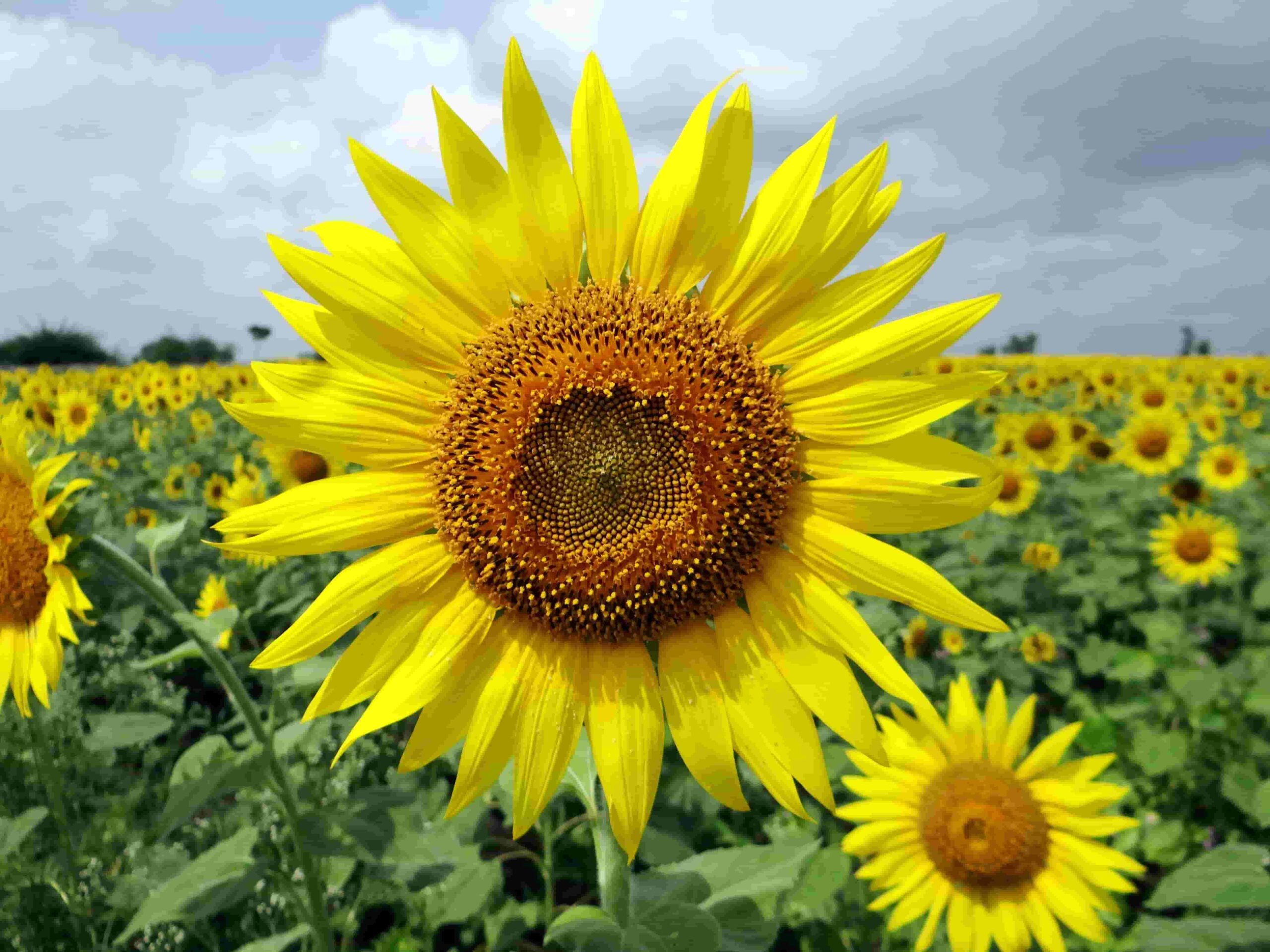Introduction
Few flowers can rival the beauty and elegance of sunflowers when it comes to colorful and fascinating blossoms. These cheerful plants are known for their large, golden-yellow blooms that seem to radiate warmth and happiness. Sunflower may be a pleasant addition to any garden, whether you’re an expert gardener or just starting out. In this post, we will delve into the intriguing world of these flowers, learning about their history, many types, growing advice, and the myriad advantages they provide. So, let us plunge in and learn about the beauties of sunflowers!
Origins of Sunflowers

Sunflowers (Helianthus annuus) are native to North and Central America, where they have been cultivated for thousands of years. The indigenous people of these regions, such as the Native Americans, revered sunflower for their beauty and practical uses. They used the seeds as a food source and made oil from them, while the stalks were utilized for building materials.
Varieties of Sunflower
Sunflowers are available in a wide range of shapes, sizes, and colors. Some popular varieties include:
- Dwarf Sunflower: These compact sunflower plants are ideal for small gardens or containers.
- Giant Sunflower: Known for their towering height, these sunflower plants can reach impressive sizes, with some exceeding 12 feet.
- Multi-Branched Sunflower: These varieties produce multiple blooms on a single plant, providing a stunning display of flowers.
- Velvet Queen Sunflower: These unique sunflowers feature deep, dark red petals that add a touch of drama to any garden.
Growing Sunflowers

1. Choosing the Right Location
Sunflower plants thrive in full sunshine, so locate them in your garden where they will receive at least six to eight hours of direct sunlight every day. Check that the area is well-drained and wind-protected.
2. Soil Preparation
Remove weeds and incorporate organic materials, such as compost or well-rotted manure, into the soil. Sunflower plants like soil that is moderately rich and has a pH between 6.0 and 7.5.
3. Sowing Sunflower Seeds
After the last frost has passed and the soil has warmed up, sow the sunflower seeds straight into the soil. Make careful to spacing the seeds per the variety’s instructions, since bigger kinds require more space between plants.
4. Watering and Fertilizing
Water the sunflower plants on a regular basis, especially during dry times, to maintain the soil wet but not saturated. Use a sufficient fertilizer once or twice throughout the growing season to ensure healthy development.
5. Providing Support
Tall sunflower varieties may require support to prevent them from toppling over. Install stakes or use a trellis system to support the plants as they grow.
Caring for Sunflowers

1. Pruning and Deadheading
Remove any dead or fading flowers on a regular basis to promote continual flowering. Prune the sunflower stalks to control their height and promote branching in multi-branched varieties.
2. Protecting from Pests and Diseases
Common pests such as aphids, snails, and slugs should be prevented. Apply organic pest control methods or use insecticidal soap to protect your sunflowers. Additionally, maintain proper ventilation around the plants to avoid fungal illnesses.
3. Harvesting Sunflower Seeds
Allow the sunflower heads to dry on the plant until the back of the flower head turns brown. Cut the head off and hang it upside down in a well-ventilated area to complete the drying process. When the seeds are dry, remove them and store them in a cold, dry location.
Benefits of Sunflowers

1. Aesthetic Appeal
Sunflowers are renowned for their striking beauty and bring a cheerful ambiance to any garden or floral arrangement. Their vibrant colors and impressive size make them a focal point that attracts attention and admiration.
2. Attracting Pollinators
Sunflowers produce nectar and pollen-rich flowers that attract bees, butterflies, and other beneficial pollinators. By planting them in your garden, you’re providing a valuable food source for these essential creatures.
3. Environmental Benefits
Sunflower plants have phytoremediation properties, which means they can absorb harmful substances from the soil, helping to detoxify polluted areas. They are also known for their ability to extract heavy metals from contaminated soil.
4. Edible Sunflowers
Some sunflower varieties produce edible seeds that are not only delicious but also rich in nutrients. These seeds can be enjoyed as a healthy snack or used in various culinary creations.
Conclusion

These flowers are an eye-catching and adaptable addition to any landscape. From their origins in North and Central America to the wide range of varieties available today, sunflowers have enchanted people for centuries. By following the proper cultivation techniques and providing care, you can enjoy the beauty of these flower and reap their numerous benefits. So, why not brighten up your garden with these radiant blooms?
In conclusion, sunflowers are not only visually captivating but also offer a range of benefits. Their origins in North and Central America have contributed to their rich cultural significance, and their different varieties provide options for gardens of all sizes. By following proper cultivation techniques and providing care, you can enjoy the beauty of sunflowers while attracting pollinators, contributing to environmental remediation, and even enjoying their edible seeds. So why wait? Add a touch of brightness and elegance to your garden with these radiant blooms.
Frequently Asked Questions (FAQs)
1. Can sunflowers grow in pots or containers?
Yes, dwarf varieties of sunflowers are well-suited for growing in pots or containers. Ensure the containers have good drainage and provide sufficient sunlight for the plants.
2. How long does it take for sunflowers to bloom?
The time it takes for sunflowers to bloom varies depending on the variety and growing conditions. On average, sunflowers bloom within 70 to 100 days from planting.
3. Can I save sunflower seeds for planting next year?
Absolutely! Allow the sunflower heads to dry on the plant, then remove and store the seeds in a cool, dry place. Make sure to label them properly for future planting.
4. Are sunflowers drought-tolerant?
Sunflowers are relatively drought-tolerant once established. However, regular watering during dry spells is still important, especially for optimal growth and flowering.
5. Can I cut sunflowers for floral arrangements?
Yes, sunflowers make fantastic cut flowers. Cut them early in the morning and place the stems in a vase with water. To extend the vase’s life, change the water on a regular basis.

